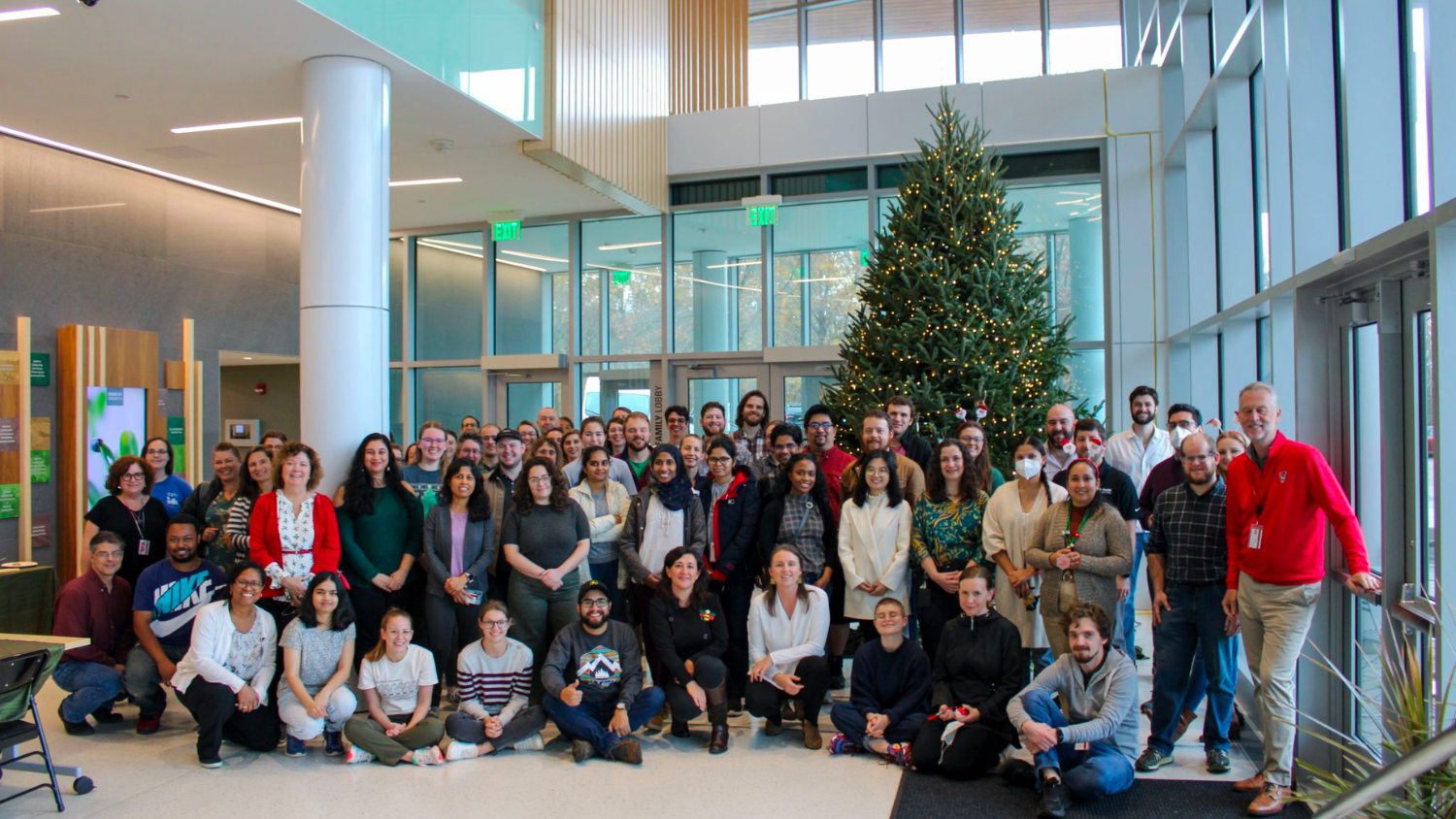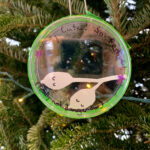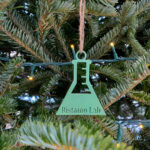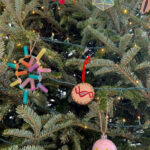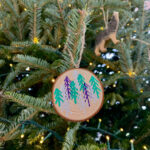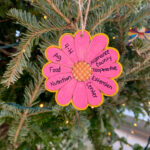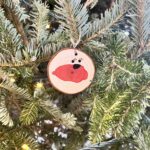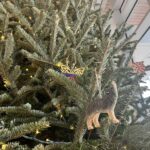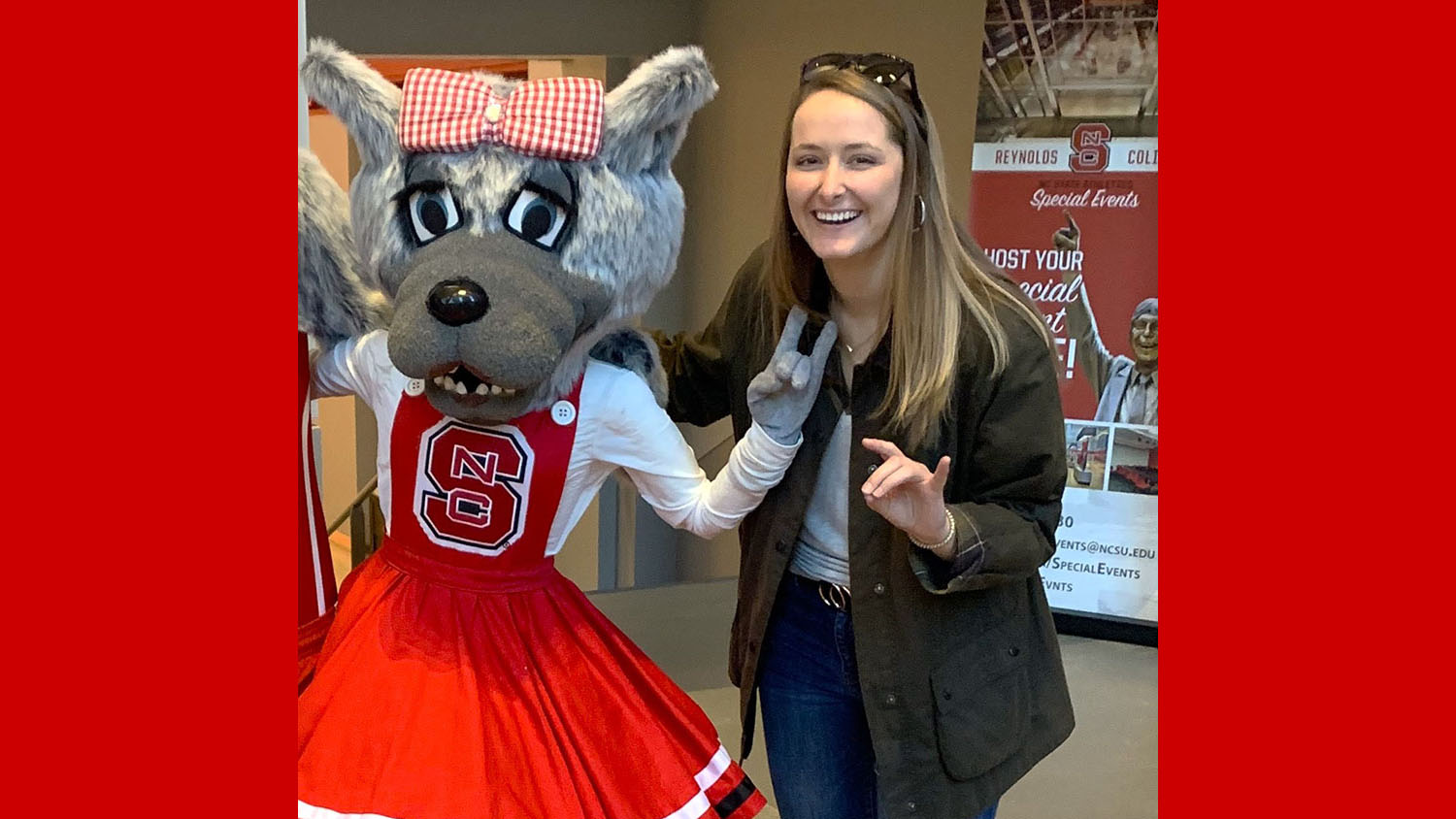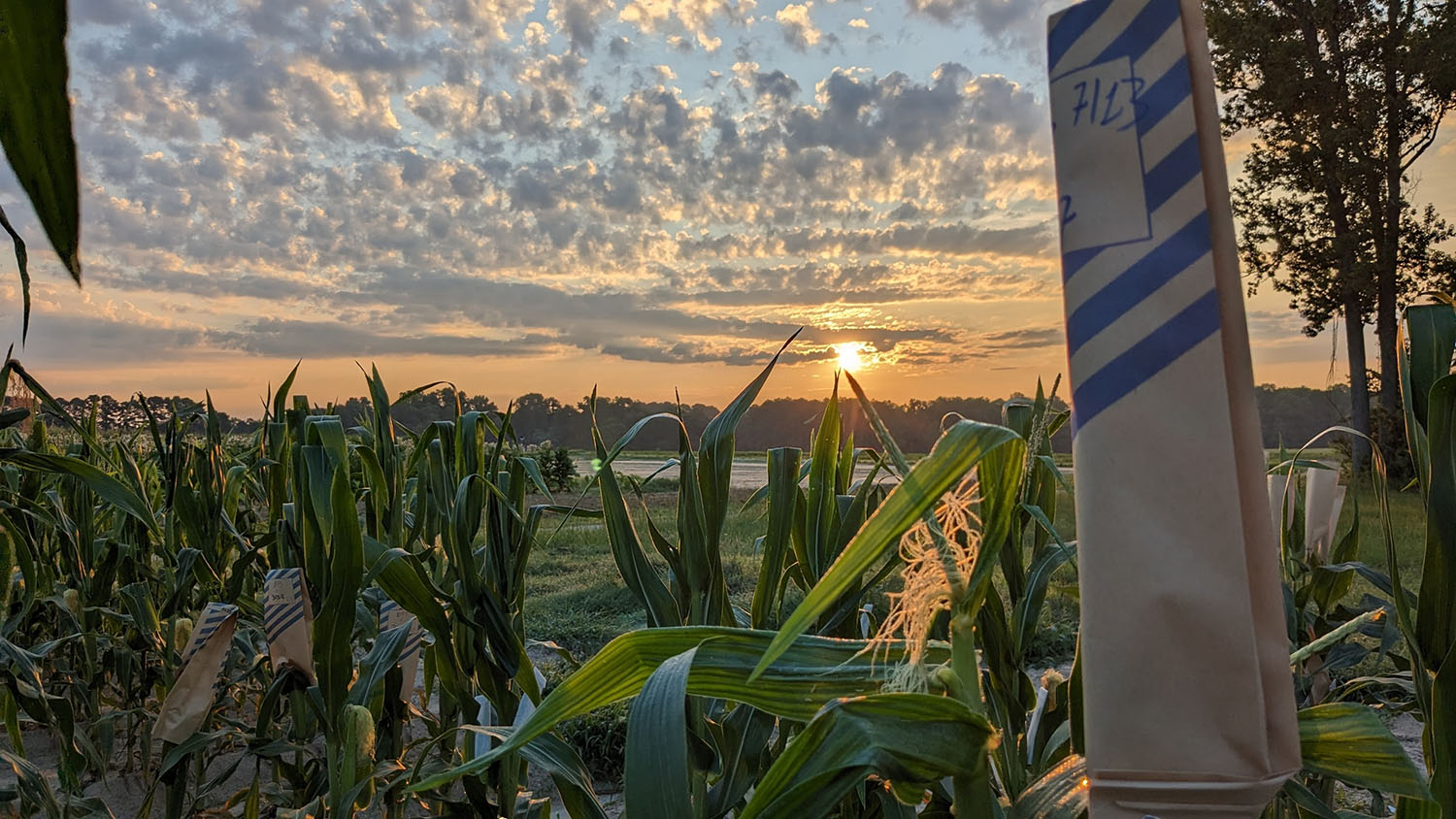It’s no secret that North Carolina growers produce beautiful Christmas trees, and the Fraser fir is the state’s specialty. As a species known for impressive needle retention, strong branches and delightful aroma, the Fraser fir was the ideal choice to usher in the first holiday season in the North Carolina State University Plant Sciences Building.
“The holidays are a time when people come together as a community or family to spend time together, celebrate and exercise gratitude for each other,” says Alexandra Goodnight, the university programs specialist for the N.C. Plant Sciences Initiative (N.C. PSI). “Our internal culture and community are a vital part of the N.C. PSI, and this tree gives us something to come together for during this holiday season.”
Justin Whitehill, Extension specialist and director of the Christmas Tree Genetics Program, helped select the perfect holiday tree for the building’s lobby. The program has been around for over 40 years and works to advance North Carolina’s Christmas tree industry using genetics, genomics and molecular biology.
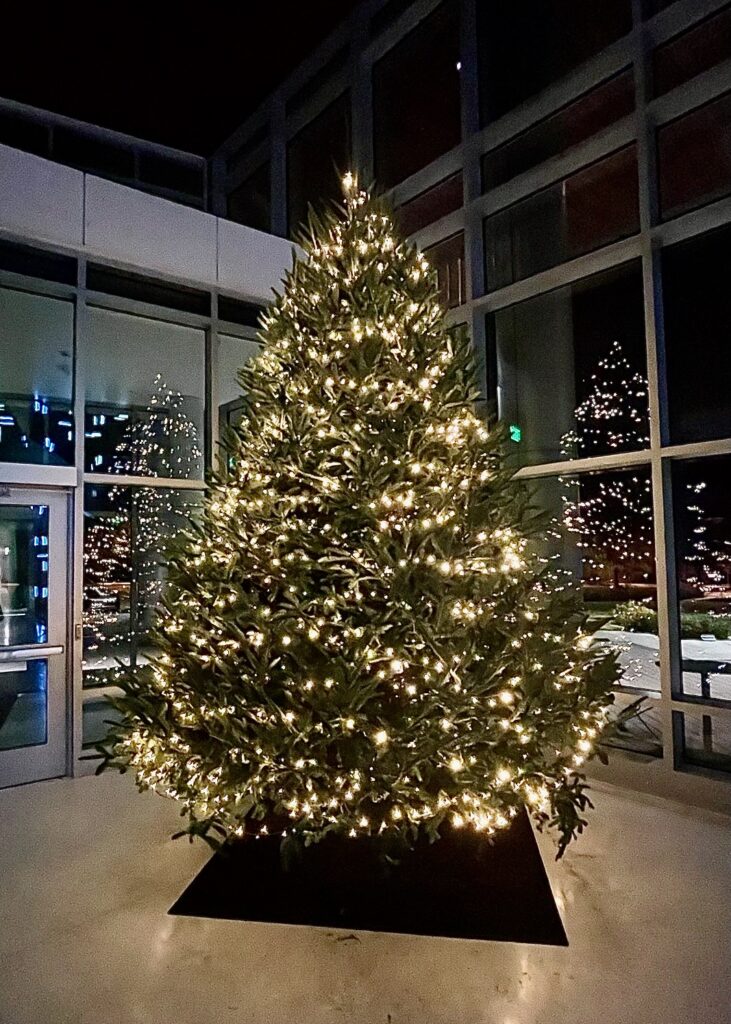
Whitehill works closely with Christmas tree growers across the state to better understand and develop solutions for the challenges they face. The N.C. PSI holiday tree was purchased from a grower that Whitehill knows well, Professor Emeritus Earl Deal, owner of Smokey Holler Tree Farm in Laurel Springs, North Carolina. Deal was part of Wood Products Extension in the College of Natural Resources before retiring.
“When I was still working at the university, I didn’t have time for a big operation, but we did enough to have fun,” says Deal. “We’ve been doing this for nearly 50 years.”
Deal remains a leader at the local, state and national levels in Christmas tree research as the chairman of the research committee for the North Carolina Christmas Tree Growers Association. He also helped establish the Deal Family Christmas Tree Research Endowment in 2005, the same year Smokey Holler Tree Farm was selected to provide the official White House Christmas tree. The endowment, which started with an investment from the Deal family, grew to be fully endowed with help from 12 other Christmas tree growers. Since its establishment, the endowment has supported numerous professors in their Christmas tree-related research projects.
“It’s a big tree, and it looks really beautiful.”
Whitehill worked with Jennifer Greene, the executive director of the North Carolina Christmas Tree Association, to select where to purchase the trees for the N.C. PSI, as well as five other locations on the North Carolina State University campus, including the Chancellor’s Office. This is the first year Smokey Holler Tree Farm was selected, with equal opportunities given to growers across the state. The farm was also the runner-up in the state competition this year.
“It’s a big tree, and it looks really beautiful,” says Whitehill, who also helped transport and set up the 15-foot, 500-pound tree with lab members from the Christmas Tree Genetics Program.
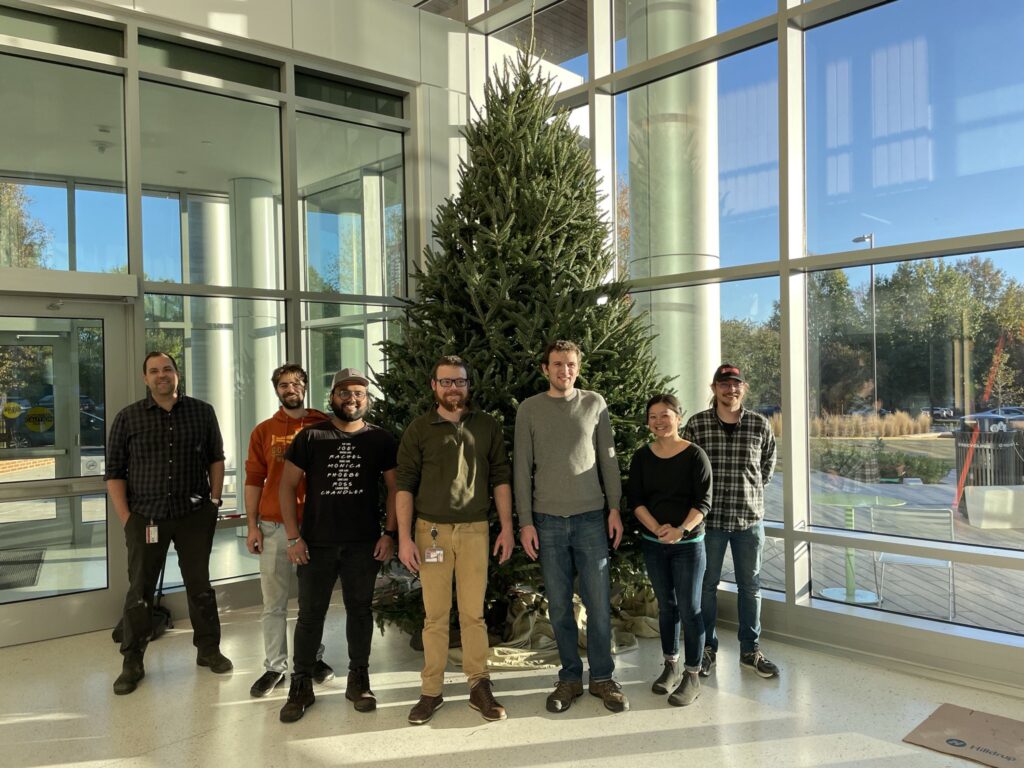
Having a Christmas tree with such close ties to North Carolina agriculture fits right in with N.C. PSI’s mission of improving plant science innovation in North Carolina and beyond.
“The NC State Christmas Tree Genetics Program is part of the N.C. PSI, and while we have some smaller trees from the Whitehill Lab in our test plots, we are thrilled to be able to showcase their work on a much larger scale,” Goodnight says. “It is truly a magnificent tree, and for us, it represents both the N.C. PSI community and our commitment to improving agriculture.”
In addition to admiring the tree’s beauty and learning about its connection to North Carolina agriculture, the N.C. PSI team had the chance to creatively decorate it.
“I wanted the community to come together to create decorations that represent the diversity within PSI,” Goodnight says. “We bought crafting supplies and encouraged people to express themselves, their research and their beliefs through ornament making.”
The tree’s one-of-a-kind ornaments include hand-painted wooden decorations, petri dish creations and a custom 3D-printed Erlenmeyer flask. It’s just what you’d expect from researchers as innovative as these.
